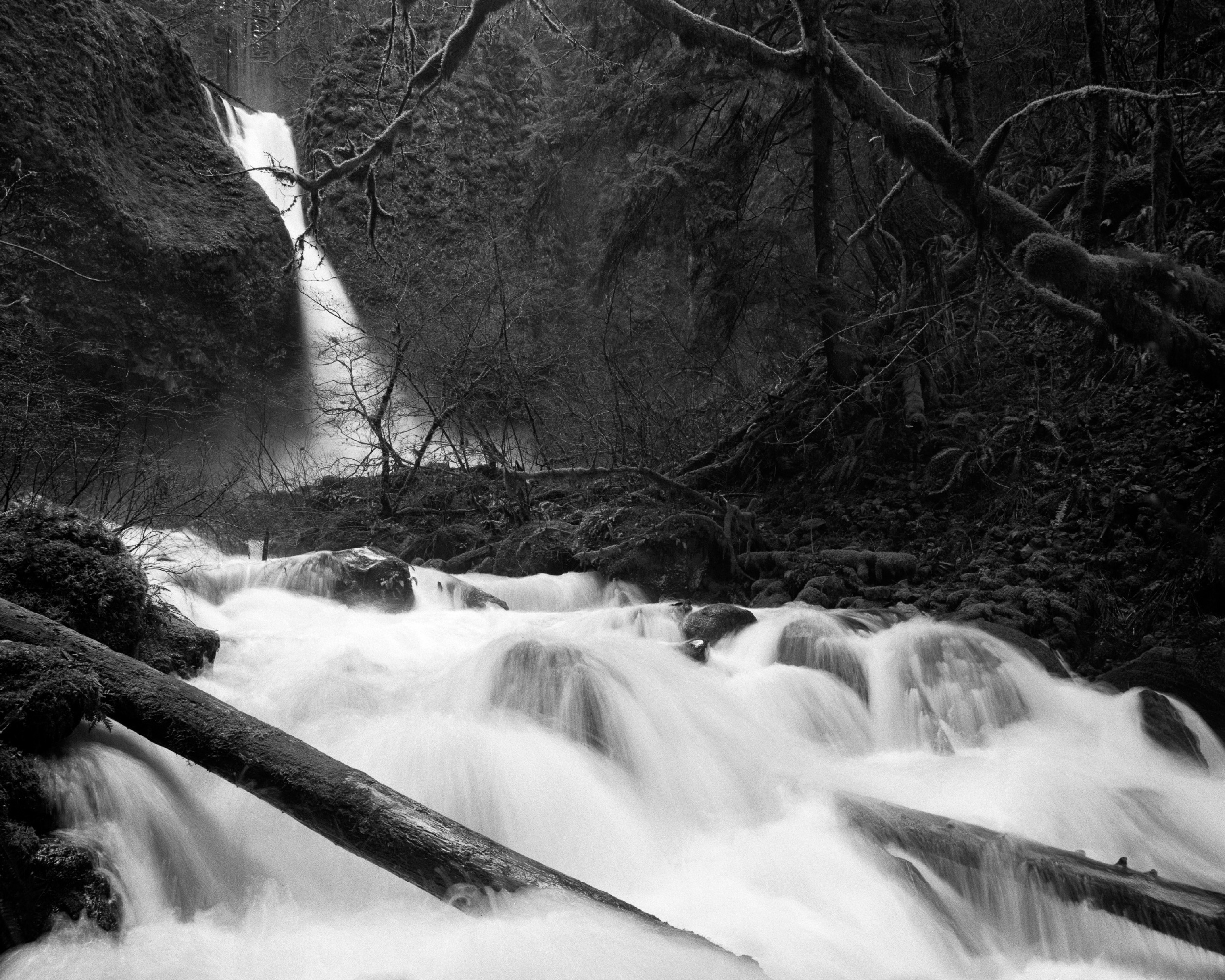After getting my Linhof Technika III up and running, I was anxious to get ahold of some 4x5 sheet film to try it out. Luckily, my good old buddy Adam (check him and his work out at http://www.contentunknown.com) had an old, and mostly full, box of Arista sheet film. Adam claimed that this film was left in a desk drawer inside a sweltering warehouse for a couple of summers. Then lived in the back of his truck for quite sometime. "Use it at your own risk," he warned.
As a side note, Arista is essentially rebranded Illford film, usually taken from the outer layers of a spool, that is sold at a lower price. Because of how it's cut, there are sometimes inconsistencies in the emulsion. At least that's what I'm told - I haven't noticed any such thing.
I took some photos around the house on a sunny day we had, and developed the sheets using the "taco" method. Yes, it uses hair ties; and yes, it's slightly ghetto, but it will work until I purchase something fancier.
After I developed this first set, I noticed that some of the negatives had some weird artifacts in them. They look like they were exposed once before. I couldn't make out what was on the negative, but it looked like leaves on the outside of the window. I conferred with Adam and he said he might have taken some photos in Alaska and may have put the exposed film back in the film packets.
Move forward a couple months, my friend Kirsten (also check out her work at http://www.kirstennevahallenbeckart.com/), convinced me to get out for a hike. The weather has been clearing up. Though the day started out cloudy and rainy, we decided to trek out to Pony Tail falls in the Gorge. It turned out to be a gorgeous, sunny day, and the short hike we did was quite refreshing.
The photo above was taken with a 90mm Linhof Schneider Angulon lens. Because of it's wide angle, I accidentally captured the rails from the bed of the camera. I didn't know this was an issue when focused to infinity. I guess that is how you learn. Luckily, the rails cropped out nicely, and the photo was salvaged. Another advantage of 4x5 negatives! Kirsten and I eventually hiked around to Triple Falls. I have been out here a dozen times, but it's always a nice hike. I capture this portrait of her:
On this hike, I took four 4x5 photos. Only two came out. I had quite a big development blunder. I didn't put anything on top of the taco-folded negatives to hold them in place. As a result, all the negatives came loose during agitation, and two photos were completely lost. The learning curve for large format photography is bigger than I thought. I am slowly learning the process. Hopefully I can nail down a workflow to both take and develop photos, as well as getting practice in using all the movements. I just need the time and light to do so! If you have any large format shooting tips, feel free to leave them below.
The photos on this page were taken with a Linhof Technika III using Arista B&W Professional Film, 400 ISO, and developed in D76.



